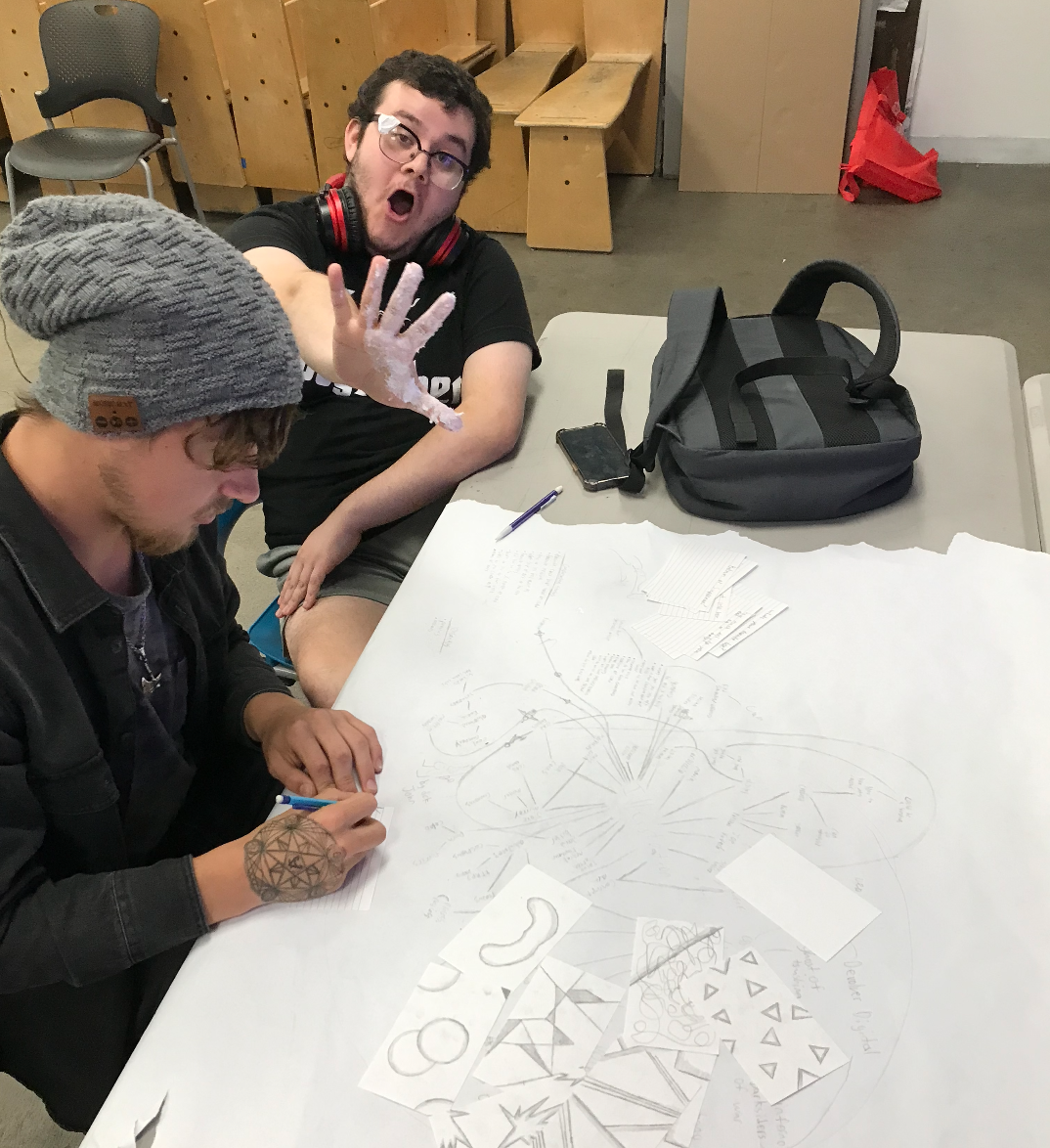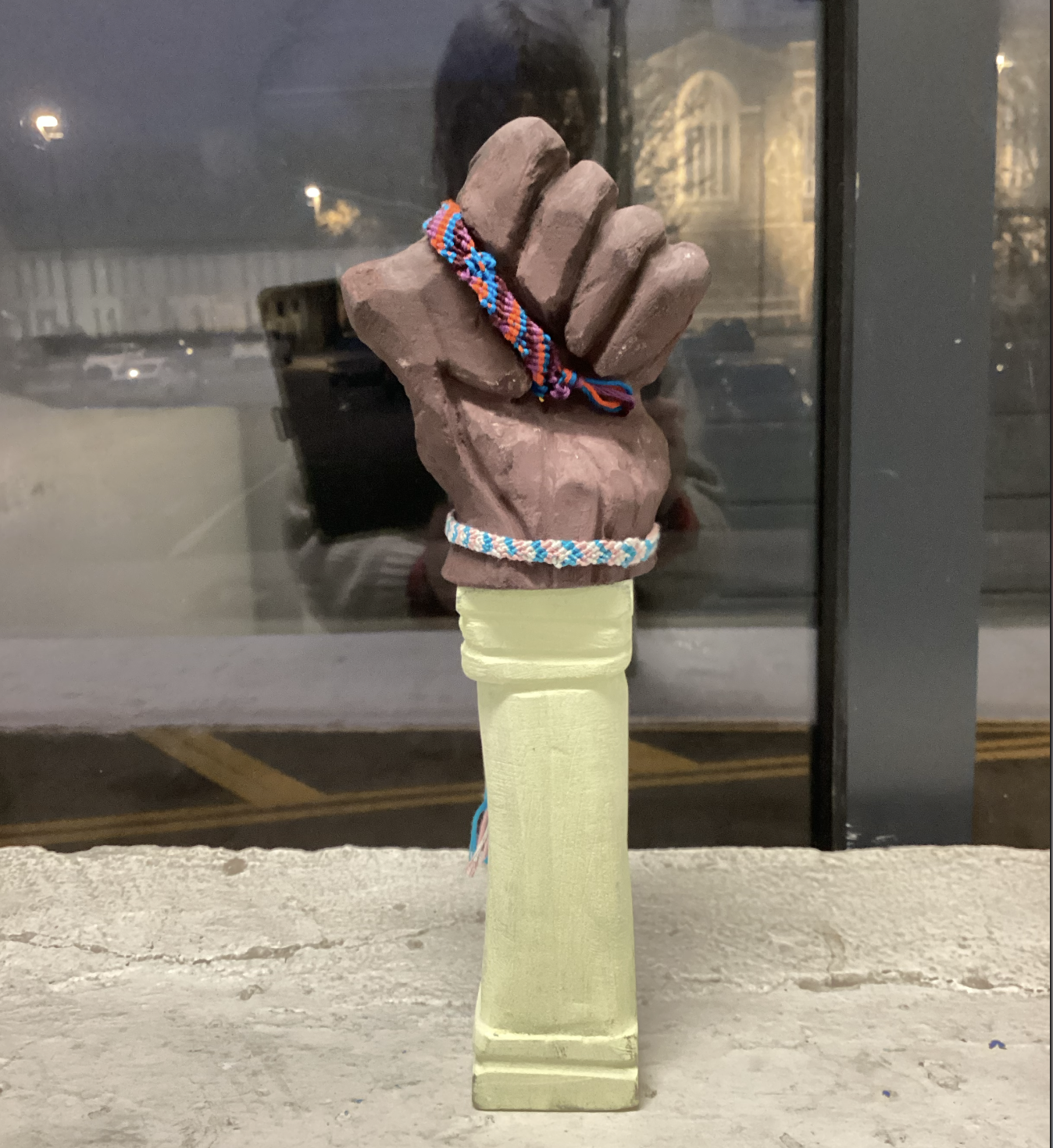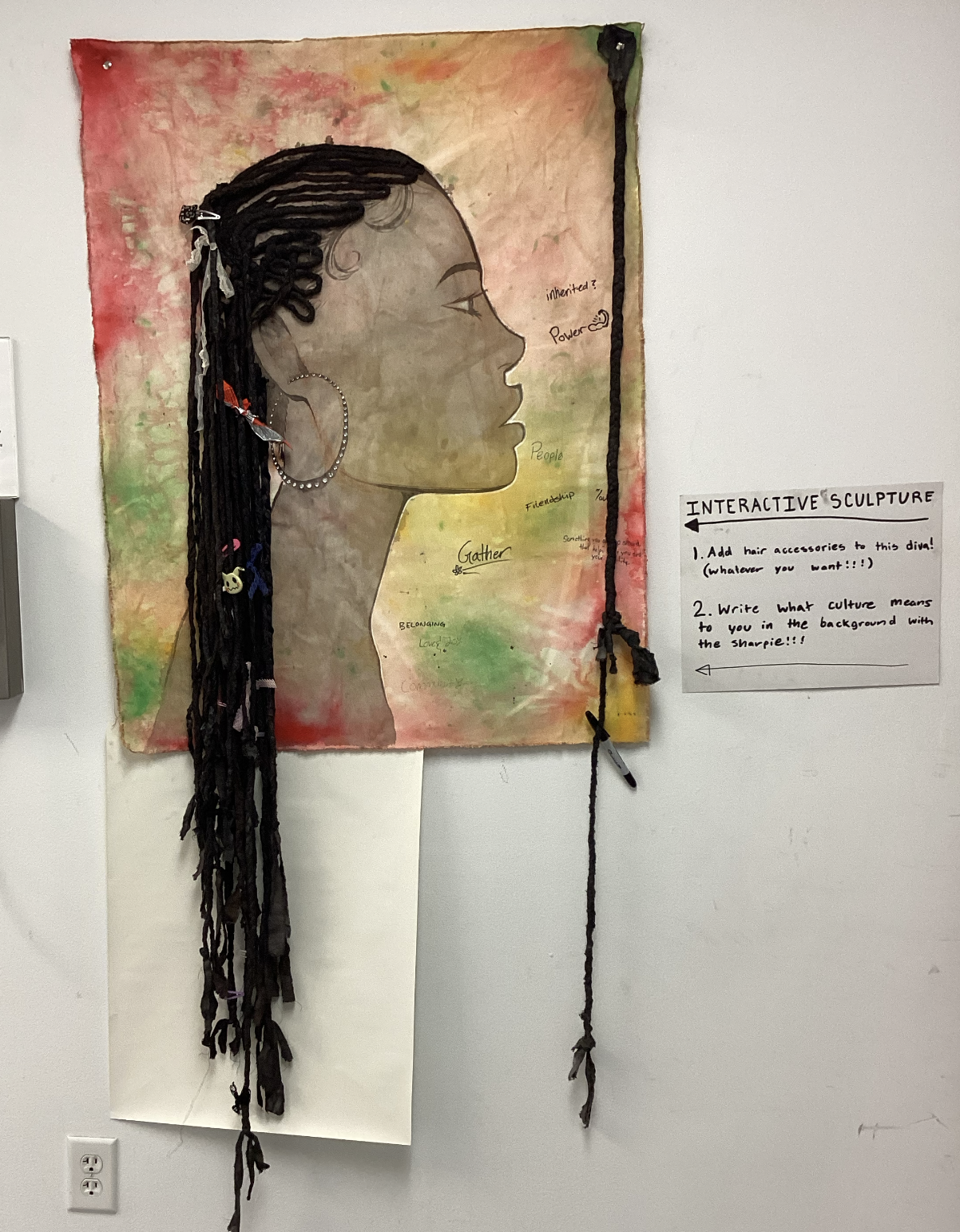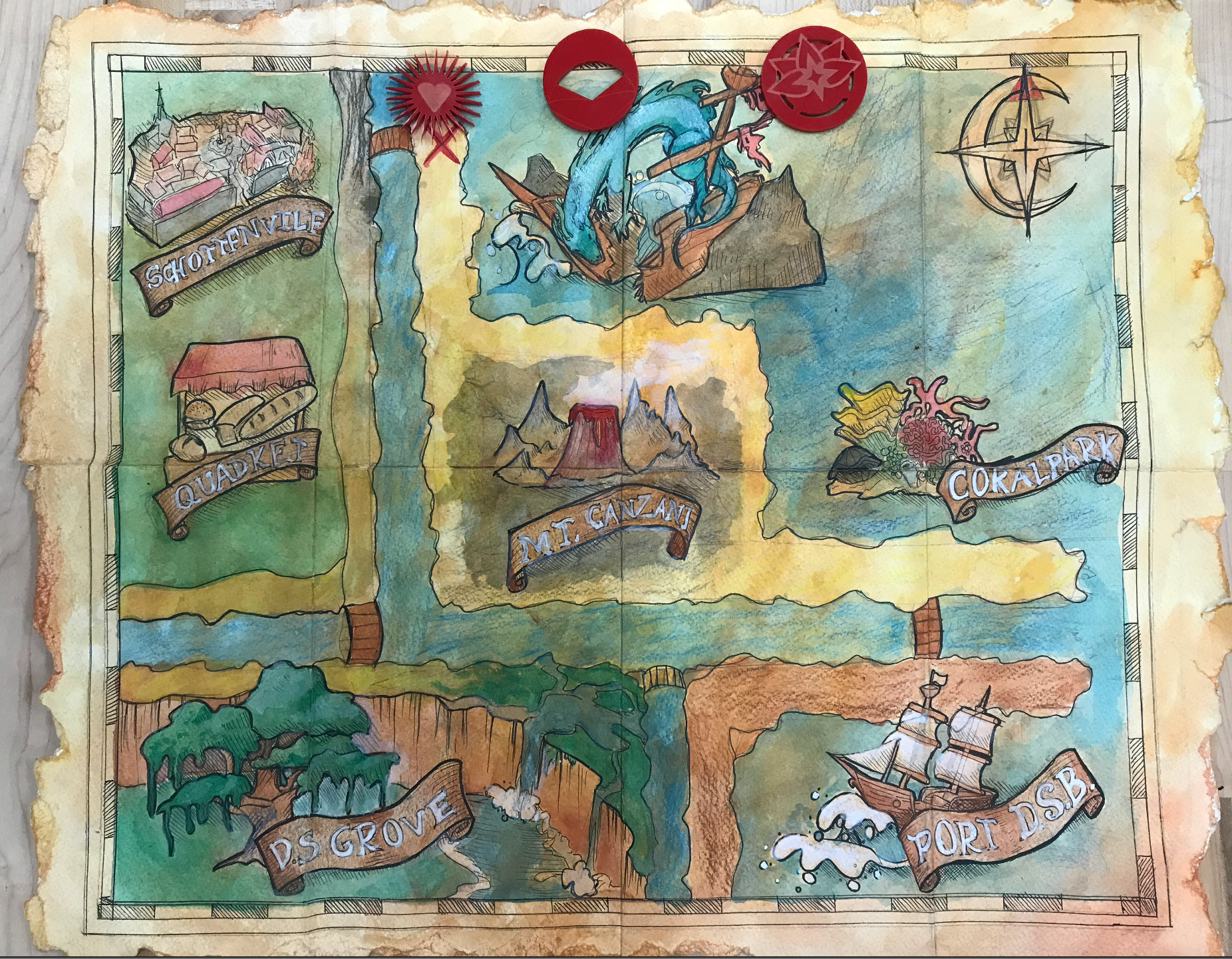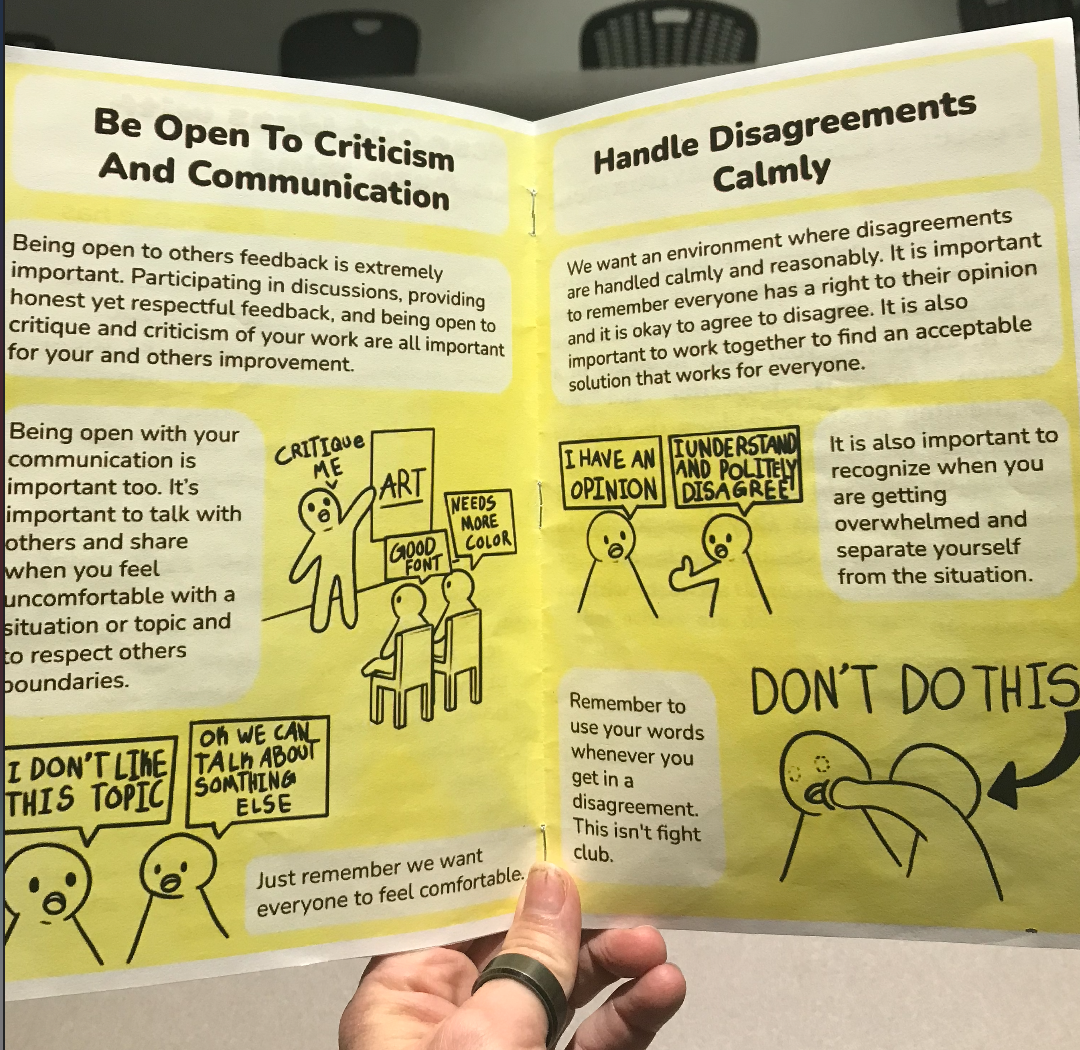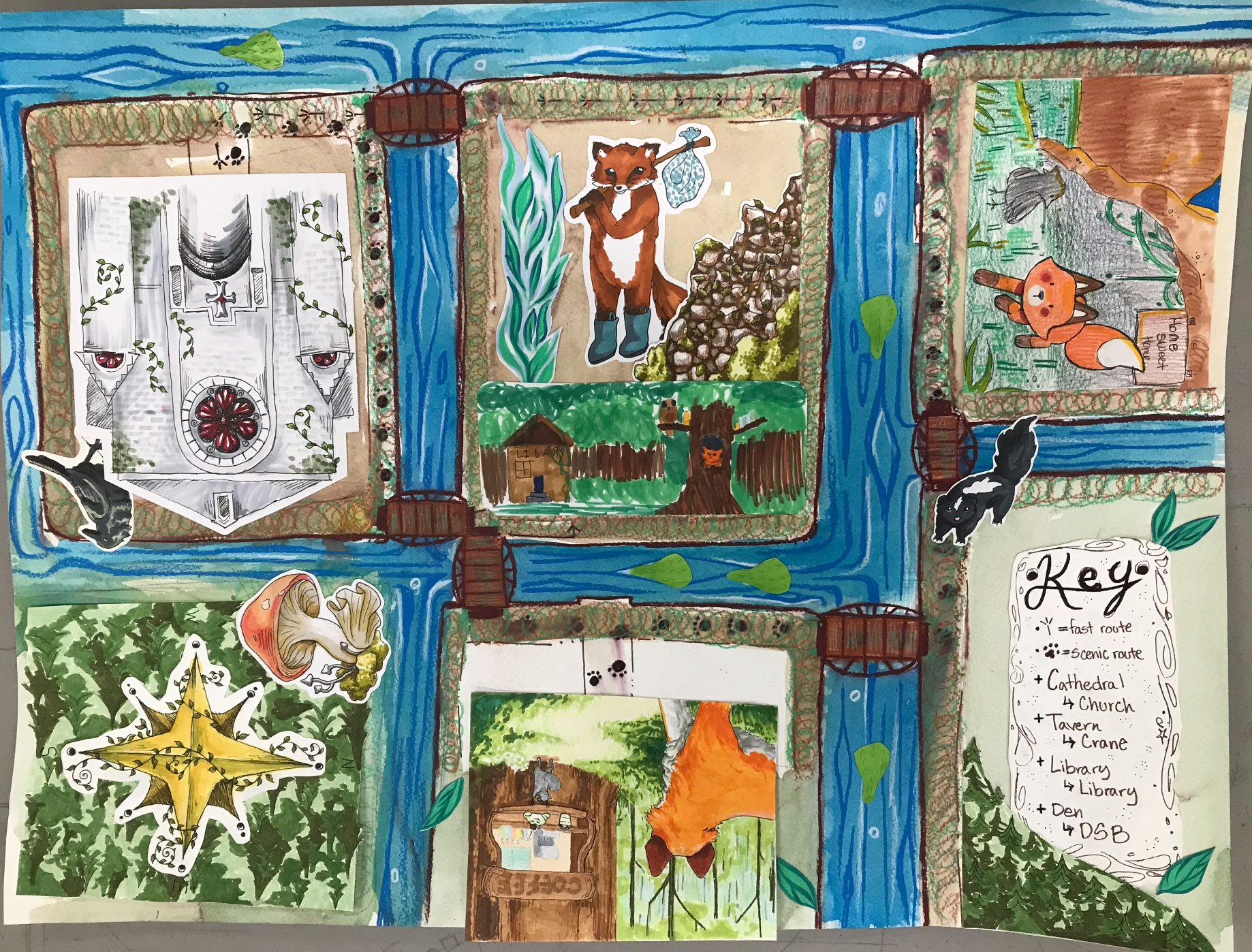Teaching Portfolio 2023-2024
Collaboration Course: The Columbus College of Art and Design: First year students.
The Collaboration course builds the student’s confidence through projects designed with collaboration in mind. This course was designed by Professor/Artist Michael Kellner. The students get to work in groups to complete creative ideas from concept to completion using the resources on and around the CCAD campus. Throughout the course, concept development is being introduced through readings, research, interviews, iterations and experimentation. Play and learning exercises are sprinkled throughout the class to build collaboration and to create a safe space for ideas to exist. We took many adventures to explore spaces on and around campus which builds the students agency as a CCAD Student on the CCAD campus and the overall accessibility to the labs, classrooms, and facilities on campus. In this class we wrote community agreements, made artwork based on conducted interviews, sensory map making, and social art that responded to a societal challenge. Below are a examples of the student’s work, and adventures that we took.
Response to Hate
We Met: Human Center Design and the power of the question through Interviewing higher level students at CCAD. (Clickable links)
For this project students conducted interviews with upper class students at CCAD and then created an artwork based on the interview. In class we studied the IDEO Field Guide to Human Centered Design as well practiced the exercises in the IDEO Field Guide to hone our skills in developing questions. WE also created mind maps based on their goals here at CCAD. The purpose of this exercises was for the student to understand the power of the question, to gather primary research, to expand their networks, and to visualize their future at CCAD
The class chose to respond to Hate. Through this project they conducted research on social practice art and on the different types of Hate. They worked with facilities to confirm a public space, created a timeline, and marketed the public event. They built their concepts and presented them to the public. The classes chose the titles, Hands against Hate and Threads of Resilience. One group laid out clothing on the ground in outfits to represent people. They had a table with paint brushes and plates of different color paint that represented different types of hate e.g Racism, Sexism, Classism... They asked passer buyers if they would like to paint their hand the color of hate they have received or expressed and place it anywhere on the clothing that was laid out on the floor. The other class popped up in a stairwell with a sound and video piece on the Black Lives Matter protests, a sculpture of the iconic Black Lives Matter fist, Collage Art, and a textural painting that depicted a young women of color with braided hair. The projects were highly engaging. The students worked together to educate and engage their fellow student peers on the project. The outcome of the project was a co-created artwork that brought together a community to be vulnerable and empowered. It was quite healing.
Hands Against Hate
We Got Out: Hands Against Hate and Threads of Resilience
Threads of Resilience
We got up: Sensory Map Making and resource building
The students created a sensory journey to the quietest place on campus, through a map making and way finding project where they used their senses to guide the experience. The students conducted research on map building, visiting the downtown library to look at the extensive physical historic maps made of Columbus, Ohio. The students were inspired by the Terra Incognita of Ancient maps and the Writing Field guide to Getting Lost by Rebecca Solnit. For Critique, the entire class took the journey to the quietest place on campus following the sensory wayfinding maps that were created by each group.
Creative Practices: The Columbus College of Art and Design: First Year Students
Creative Practices provides an introduction to the principles of 2D, 3D, and 4D design and the iterative process of making. Focusing more on process than product, this course examined the iterative process, investigation, and multiple solutions to a problem, using various media and methods. This course was designed by Professor/Artist Katie Davis. Projects leveraged the elements of 2D, 3D, and 4D design, color strategies, and an exploration of different materials while encouraging multiple solutions to a problem and a strong sense of curiosity. Course projects required traditional and nontraditional studio materials, digital media, and hybrid processes. Students also learned basic organizational and self-assessment skills through dialogue, writing, documentation of their work, and critiques.











